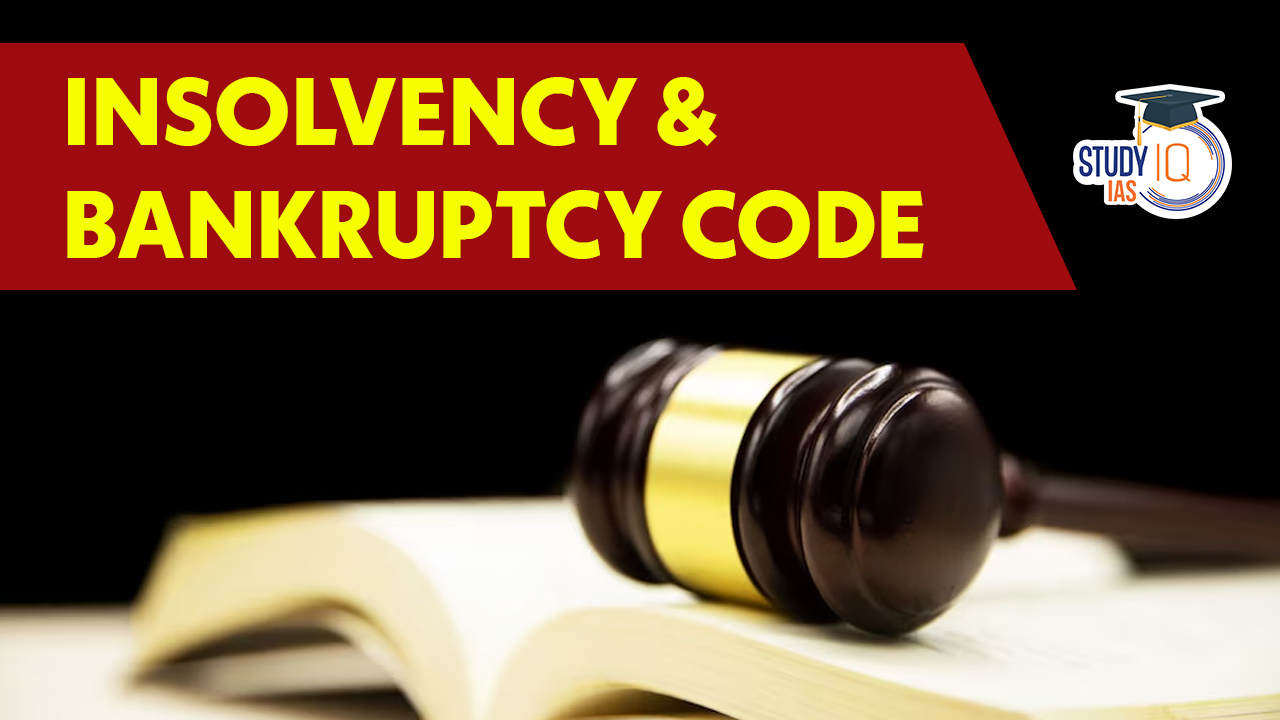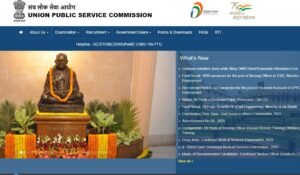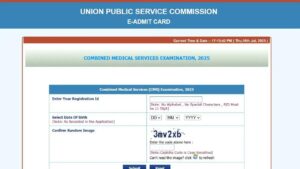Table of Contents
Insolvency and Bankruptcy Code: One of the most significant reforms adopted by the Indian Parliament in November 2016 was the Insolvency and Bankruptcy Code. The Insolvency and Bankruptcy Code, sometimes known as the IBC Code, was created to unify India’s disparate and inconsistent bankruptcy rules. The Insolvency and Bankruptcy Code’s passage was critical in reducing the banks’ bloated non-performing assets and the drawn-out debt resolution process. In May 2016, the Indian President gave it his approval.
The Insolvency and Bankruptcy Code aims to quickly restructure and put an end to the insolvencies of corporations, partnerships, and people. In the UPSC syllabus’ Economy component, which is part of General Studies exam 3, Insolvency and Bankruptcy Code is a crucial subject.
What is the Insolvency and Bankruptcy Code?
When a person or business is unable to pay their debts, they are said to be insolvent, whereas bankruptcy is the court’s official pronouncement that the insolvency resolution procedure failed. Any of the parties involved in the business, including the debtors, creditors, and employees, may begin the insolvency procedure. All people, businesses, Limited Liability Partnerships (LLPs), and partnership firms are covered under the Insolvency and Bankruptcy Code. The bankruptcy and insolvency legislation has been in effect since Parliament passed it in 2016 for six years as of this May. All prior legislation pertaining to the settlement of insolvency and bankruptcy were repealed by the Insolvency and Bankruptcy Code of 2016.
Insolvency and Bankruptcy Code 2016
The code established a uniform framework for addressing insolvency and bankruptcy matters and eliminated all preceding regulations. It gives creditors the chance to evaluate a debtor’s commercial viability. The Code creates a new legal framework, and creditors may suggest a speedy liquidation or approve the plan for the company’s revival. This approach helped with the formalisation and closure of a time-limited insolvency resolution process. The following components make up the framework:
- Insolvency professionals: These people will oversee the dispute settlement process. They also manage the debtor’s assets and give creditors information to aid in decision-making.
- Professional Insolvency Agencies: Insolvency practitioners will register with professional insolvency agencies. To certify insolvency professionals, exams would be given, and the agencies would enforce a code of behaviour for their work.
- Information utilities: They’ll keep tabs on the obligations owing to creditors, as well as repayments and defaults on payments.
- Adjudicating authorities: They will provide the go-ahead for the resolution process to begin, select the insolvency professional, and approve the final verdict rendered in favour of the creditors.
- Corporations and limited liability companies appeal decisions to the National Company Law Tribunal (NCLT).
Insolvency and Bankruptcy Code Objective
The objectives of the IBC, Insolvency and Bankruptcy Code are as follows:
- Consolidate and update all of India’s current insolvency legislation.
- One of the goals of the Insolvency and Bankruptcy Code is to expedite and make clear the insolvency and bankruptcy proceedings in India.
- To protect the interests of the company’s stakeholders, creditors, debtors, and employees.
- To promote entrepreneurship while also revitalizing the business in a timely manner.
- The Insolvency and Bankruptcy Code also aims to establish an insolvency and bankruptcy board in India.
- To offer the creditors necessary relief, which will lead to a rise in the amount of credit available to the economy.
Insolvency and Bankruptcy Code (Amendment) Bill, 2021
- Pre-packaged insolvency resolution:The modification allows for the use of pre-packaged insolvency resolution as an alternate resolution method for MSMEs. Between Rs. 10 lakh and Rs. 1 crore is needed to start a Pre-Packaged insolvency settlement.
- Section 54A:Pre-packaged insolvency resolution options (PPIR) can be adopted thanks to it. In PPIR restructuring, creditors and debtors work together to create a loose plan before submitting it for approval. Under this strategy, financial creditors will agree to the terms of a potential investor. Additionally, they will ask the National Company Law Tribunal (NCLT) for approval of the settlement proposal.
- Approval of financial creditors:However, the resolution plan cannot be submitted to NCLT directly. A resolution plan must receive the blessing of at least 66 percent of unaffiliated financial creditors before it can be submitted.
- Minimum default amount:One may apply for PIRP in the event of a default of at least one lakh rupees. The national government could increase the minimum default level to one crore rupees by issuing a notification.
- Moratorium:During the PIRP procedure, the debtor will be given a moratorium during which certain actions against the debtor are prohibited. Court orders can be followed, lawsuits can be started or continued, and property can be reclaimed.
- Initiation of CIRP:The NCLTs must assess a pre-pack insolvency process before approving a Corporate Insolvency Resolution Process (CIRP). The process of resolving corporate insolvency in conformity with the requirements of the Insolvency and Bankruptcy Code, 2016, is known as CIRP.
Insolvency and Bankruptcy Code Benefits
- Faster Resolution:More than 86% of ongoing bankruptcy resolution procedures had surpassed the 270-day threshold as of December 2020. On the other hand, the PPIR process is only allowed a maximum of 120 days. Additionally, the NCLT has given the parties just 90 days to present a settlement proposal.
- Greater Debtor Autonomy:The current management still has jurisdiction in pre-packs. On the other side, a resolution specialist takes control of the debtor on behalf of the creditors. This results for the debtor in a solution that is both economical and valuable.
- The PPIR provides financial creditors with significant consent rights, which prevents wayward promoters from manipulating the system. For instance, at least 66% of financial creditors must consent to a resolution plan before it can be submitted. As a result, financial creditors cannot take advantage of the system.
- A just resolution: The change makes sure that creditors and debtors are both involved in the resolution procedure. This method differs from the prior one. Because creditors receive excessive attention in the settlement under the IBC 2016.
- Prevents job losses by decreasing the chance of liquidation with PPIR. As a result, business continuity is assured and the number of employee layoffs is decreased.
Insolvency and Bankruptcy Code Challenges
Lower recovery rates because 61.2% of the admitted claims of the enterprises through the Corporate Insolvency Resolution Process (CIRP) have been cut off by public and private sector banks, non-banking financial institutions, and other financial lenders. The insolvency and bankruptcy code has numerous open cases. Over 180 days had passed in almost 71% of the instances. The National Company Law Tribunals are now handling this.
The insolvency and bankruptcy regulations’ primary goal was to promote entrepreneurship and resolution, though. However, they emphasize liquidation more. Additionally, there is a personnel problem because the National Company Law Tribunals have more than 50% of their workforce unfilled. Cross-border insolvency resolution is not included. Lack of adaptability among resolution experts.


 UPSC ESIC Nursing Officer Final Result 2...
UPSC ESIC Nursing Officer Final Result 2...
 UPSC CMS Admit Card 2025 Out: Download L...
UPSC CMS Admit Card 2025 Out: Download L...
 UPSC Study Material for Prelims & Ma...
UPSC Study Material for Prelims & Ma...





















